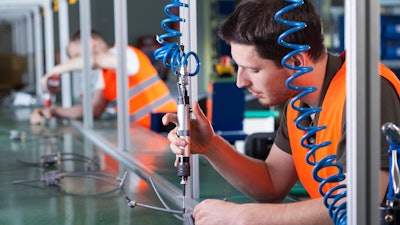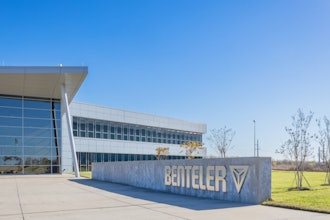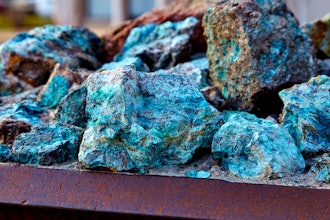
While COVID-19 and emerging variants continue to leave the world with more questions than answers, industry leaders keep working to offset the effects on businesses and their employees. Companies worldwide continue to reform their strategic approach and modify how they operate, from the lasting impacts on supply-chain, to rapid inflation rates.
Cost-saving measures have always been at the forefront of decision-making for companies. Still, the pandemic has taught us that we need to think beyond the obvious and be prepared for contingencies. Strategic investments of both time and resources, and preparation for whatever may challenge us next are the primary focus in boardrooms everywhere.
But what exactly do leaders need to consider to be successful as we get closer to emerging from the pandemic?
Ways to Buy
Watching out for the bottom line always has and will continue to be of the utmost importance – pandemic or not. Mention utilities and energy in a discussion about manufacturing and the big three – water, electricity, and natural gas – Immediately come to mind. But compressed air is commonly accepted as a manufacturing facility’s Fourth Utility.
There has recently been a shift in the way that compressed air providers approach compressed air equipment purchases. This includes providing leasing options, where you can lease the equipment for a defined period and have the option to purchase at the end of the lease, as well as the newer and more flexible approach of buying air only.
You purchase air like a utility, just as you would water, electricity, and heat. Depending on the program and provider, full system design services and all maintenance may also be included. For the right customer, this has several advantages, including not needing a significant capital expenditure at the start of the project and having no maintenance responsibility for the equipment – as that's taken care of by the manufacturer.
From a supplier point of view, it's all about offering the customer multiple ways to buy, understanding their business needs, and matching the best program to those needs. The cost of capital is still relatively low at present, so for many companies this represents a good time to make upgrades.
Building Out, Optimizing Compressed Air
The pandemic has also shown us how supply chain can be affected quite quickly, from the manufacturing of goods to the ability of shipping companies to deliver based on capacity issues. This means that manufacturers cannot afford to ignore contingency planning for all scenarios.
The cost of downtime isn’t cheap and is on the top of every plant manager’s priority list. By building a system to offset the “all or nothing” set up – by adding a second compressor or running two smaller ones as opposed to one large one – has never been easier. Using a variable speed drive (VSD) compressor provides flexibility for demand. While this technology is not new, many customers who could utilize it still have not. VSD compressors can be simply explained as multiple compressors inside one box — they give you the ability to run efficiently based on different demand loads.
Last, never neglect service and the need for preventative maintenance – it will catch up with you eventually.
Remote Audits
Companies have accepted that remote work is a viable option for those roles where such flexibility is possible. While many industrial roles are not as flexible, manufacturers have still embraced remote technologies that make their jobs more efficient.
Air audits is one area where remote working has really been embraced. When we talk about audits, detailed supply and demand-side audits always need to be conducted on-site. The term audit is also often used for more straightforward studies that involve data-logging machines and monitoring performance over a defined period — we refer to these more as surveys than audits.
The simple installation means that the equipment needed for a survey can be sent to the customer without the need for somebody to go on-site and set it up. The results can then also be shared online.
In addition, most new compressors can easily be remotely connected when it comes to monitoring efficiency. So, you can always see the performance and plot analysis curves, no matter where you are in the world. You can think of remote monitoring as an ongoing audit that happens 24/7, and importantly, any potential issues are identified before they can become serious problems.
The trend of digital monitoring was solidified after the FDA issued guidelines for conducting regulatory inspections remotely. The FDA plans to use tools including teleconferencing, live-streaming video, and screen-sharing technologies to conduct remote evaluations if remote evaluation is deemed appropriate for a facility.
Think About Tomorrow, Today
The Suez Canal blockage, port congestion in the U.S., and the worldwide ship shortage on global trade have caused logistics backlogs projected through the end of the year.
Freightos Baltic Index indicates shipping costs have risen 80 percent since early November, and have tripled over the past year, resulting from a rise in consumer consumption of goods over service. The unprecedented shift in spending resulted in long-standing trade patterns now bottlenecked. Industries across the globe are challenged to receive the products they need to fulfill orders, including the parts to create and repair machinery.
Contingency planning for every scenario and forecasting the inventory you need six months (or more) from now will help you stay ahead and avoid potential costly production delays. The “what if’ scenarios that we discussed, but didn’t seem real for much of our professional careers, can be a reality – we have learned that, and customers should work with their manufacturers to plan ahead and ensure the plan is in place.
We’ll never really know what challenges or adversities are around the next corner. At best, we can learn from each of these experiences, adopt some best practices, and try to emerge stronger than before. Companies must consider new ways to build and support their operations, plan even further ahead to offset potential problems, and take care of their equipment.
Hopefully, your company is poised for a strong end to 2021 and a promising 2022.
This blog was submitted by Atlas Copco, a leading supplier or air compressors and compressed air services and solutions.






















